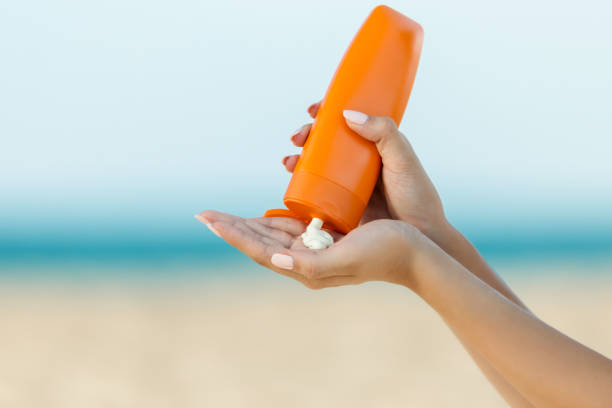
FAQ About Sunscreen

What are the different types of sunscreens available?
There are two main types of sunscreens available: physical (mineral) sunscreens and chemical sunscreens. Each type works differently to protect the skin from the sun's harmful UV rays:
Physical (Mineral) Sunscreens:
- Active Ingredients: Physical sunscreens contain active mineral ingredients such as zinc oxide and titanium dioxide.
- Mechanism of Action: When applied to the skin, these minerals form a protective barrier that sits on the skin's surface. They work by reflecting and scattering UV radiation away from the skin, preventing it from penetrating and causing damage.
- Broad-Spectrum Protection: Physical sunscreens provide broad-spectrum protection, shielding the skin from both UVA and UVB rays.
- Gentle on the Skin: They are generally considered gentle and suitable for sensitive skin types since they are less likely to cause skin irritation or allergic reactions.
- Immediate Effectiveness: Physical sunscreens start working as soon as they are applied to the skin, offering immediate protection.
Chemical Sunscreens:
- Active Ingredients: Chemical sunscreens contain organic compounds such as avobenzone, octinoxate, oxybenzone, and others.
- Mechanism of Action: These compounds work by absorbing UV radiation when applied to the skin. They convert the absorbed UV rays into less harmful energy, such as heat, before they can cause damage.
- Broad-Spectrum Protection: Many chemical sunscreens also provide broad-spectrum protection against both UVA and UVB rays.
- Lightweight and Transparent: Chemical sunscreens tend to be lighter in texture and often leave no visible residue on the skin, making them popular for daily use.
- May Require Time to Activate: Some chemical sunscreens may take around 20-30 minutes to become effective after application, so it's essential to apply them before heading outdoors.
Additionally, within these two main types, you can find various formulations and features, such as:
- Water-Resistant Sunscreens: Suitable for activities like swimming or sweating, these sunscreens offer longer-lasting protection even when exposed to water.
- Sport Sunscreens: Designed to stay on during intense physical activities, providing better adherence to the skin.
- Spray Sunscreens: Available in aerosol cans, they are easy to apply but may require careful and even coverage to ensure effectiveness.
- Lotion Sunscreens: The most common and traditional form of sunscreen, available in various consistencies and for different skin types.
- Gel Sunscreens: Often preferred for oily or acne-prone skin due to their lightweight, non-greasy texture.
- Stick Sunscreens: Convenient for targeted application, especially around the eyes and lips.
- Tinted Sunscreens: Offer an additional benefit of light coverage, serving as a sunscreen and a light foundation or BB cream.
- Kids' Sunscreens: Specifically formulated for children's sensitive skin and often free of fragrance and harsh chemicals.
- Reef-Safe Sunscreens: Formulated without ingredients harmful to coral reefs, making them environmentally friendly.
